#society of composers and lyricists
Explore tagged Tumblr posts
Text
4th Society of Composers & Lyricists (SCL) winners: 'Nope,' 'Everything Everywhere All At Once,' 'The White Lotus'
4th Society of Composers & Lyricists (SCL) winners: 'Nope,' 'Everything Everywhere All At Once,' 'The White Lotus'

View On WordPress
#diane warren#everything everywhere all at once#guillermo del toro&039;s pinocchio#nope#scl awards#society of composers and lyricists#the white lotus
1 note
·
View note
Text
Eurovision Fact #254:
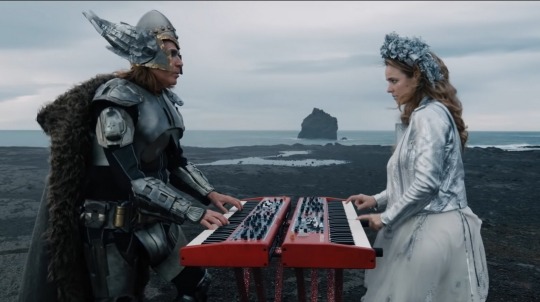
The 2020 movie Eurovision Song Contest: The Story of Fire Saga was nominated for 28 awards, one of which was the Oscar for Best Achievement in Music Written for Motion Pictures (Original Song) for the song 'Husavik.' However, the song lost to Judas and the Black Messiah's 'Fight for You.'
Out of the films 28 nominations, it won six awards:
At GALECA: The Society of LGBTQ Entertainment Critics (2021), the movie won the Dorian Award for Campy Flick of the Year.
From the Hollywood Critics Association (2021), they won the HCA Award for Best Original Song, again for 'Husavik.'
At the International Online Cinema Awards (INOCA) in 2020, Fire Saga took home the Halfway Award, once again for best original song.
The movie took home the Golden Reel Award for Outstanding Achievement in Sound Editing - Feature Musical at Motion Picture Sound Editors, USA (2021).
At New Mexico Film Critics (2021), the move once again won Best original song with the NMFC Award.
Once again winning with 'Husavik,' Fire Saga won the Society of Composers and Lyricists Awards (2021)'s SCL Award for Outstanding Original Song for Visual Media.
[Sources]
Eurovision Song Contest: The Story of Fire Saga Awards, IMDb.com.
Oscars 2021, IMDb.com.
HCA Awards 2021, IMDb.com.
Awards (INOCA) 2020, IMBd.com.
USA 2021, IMDb.com.
NMFC Award 2021, IMDb.com.
SCL Awards 2021, IMDb.com.
#esc facts oc#eurovision#esc#eurovision song contest#eurovision facts oc#Eurovision Song Contest: the Story of Fire Saga#fire saga#Eurovision Song Contest the story of Fire Saga#Society of Composers and Lyricists Awards#scl awards#New Mexico Film Critics#New Mexico Film Critics 2021#Motion Picture Sound Editors#International Online Cinema Awards#inoca#Hollywood Critics Association#GALECA: The Society of LGBTQ Entertainment Critics
15 notes
·
View notes
Text
4th Annual Society of Composers & Lyricists Awards — Film Winners
Outstanding Score for a Studio Film Michael Abels – Nope — WINNER Alexandre Desplat – Guillermo del Toro’s Pinocchio Carter Burwell – The Banshees of Inisherin Michael Giacchino – The Batman John Powell – Don’t Worry Darling
Outstanding Score for an Indipendent Film Son Lux – Everything Everywhere All At Once — WINNER Leo Birenberg, Zach Robinson – Weird: The Al Yankovic Story Sharon Farber – Brainwashed: Sex-Camera-Power Rob Simonsen – The Whale Mark Smythe – The Reef: Stalked
Outstanding Song for a Musical/Comedy Alexandre Desplat, Roeban Katz, Guillermo del Toro – “Ciao Papa” from Guillermo del Toro’s Pinocchio — WINNER Khiyon Hursey, Sukari Jones, Benj Pasek, Justin Paul, Mark Sonnenblick – “Good Afternoon” from Spirited Danny Elfman – “Light the Match” from Central Park Billy Eichner, Marc Shaiman – “Love is Not Love” from Bros Weird Al Yankovic – “Now You Know” from Weird: The Al Yankovic Story
Outstanding Song for a Drama/Documentary Diane Warren – “Applause” from Tell It Like a Woman — WINNER Taylor Swift – “Carolina” from Where the Crawdads Sing Lady Gaga, BloodPop – “Hold My Hand” from Top Gun: Maverick Tems, Rihanna, Ludwig Goransson, Ryan Coogler – “Lift Me Up” from Black Panther: Wakanda Forever Trent Reznor, Atticus Ross – “(You Made It Feel Like) Home” from Bones and All
7 notes
·
View notes
Text
Natalie Holt once again nominated for an SCL Award for original score
The Society of Composers & Lyricists (SCL) has announced the nominees for the 45h Annual SCL Awards, which will take place on February 13, 2024 at the Skirball Cultural Center in Los Angeles. The final round of voting will commence on January 8.
Outstanding Original Score for a Television Production:
Nicholas Britell – Succession Natalie Holt – Loki Martin Phipps – The Crown Carlos Rafael Rivera – Lessons in Chemistry Gustavo Santaolalla – The Last of Us
37 notes
·
View notes
Text
The History of Korean Male Soloists from the 20th Century: Episode 2/?
The second episode of 'The History of Korean Male Soloists from the 20th Century' focuses on notable Korean artists who gained recognition in the early 20th century, a time marked by Japanese occupation.
The documentation surrounding these artists is often inconsistent, primarily because their activities took place nearly a century ago, prior to the Korean War, which resulted in the loss or inaccessibility of historical records.
Lee Eun Sang (이은상; 李殷相)
Lee Eun-sang was initially referenced in Part 3 of 'The History of Korean Male Groups' for his contribution as a lyricist for the "Boat Song," which was performed by the Yonhui College Choir and composed by Hyun Je-myeong (현제명; 玄濟明). He also penned the lyrics for "Watermill" and "Jeolumbari," both of which were composed by Hyun Je-myeong as well.
Lee Eun Sang (이은상), born on October 22, 1903, and passing on September 18, 1982, hailed from Jeonju but spent much of his life in Masan, Gyeongnam. He was the second son of Lee Seung-gyu (이승규) and adopted several pen names, with Nosan (노산;鷺山) being the most prominent, alongside Namcheon (남천; 南川), Gangsan Yuin (강산유인; 江山遊人), and Duwooseong (두우성;斗牛星).

As a distinguished South Korean sijo poet, historian, and honorary doctor of literature, Lee Eun Sang produced significant works including the 'Nosan Sahwa Collection,' 'Nosan Sijo Collection,' 'Nosan Poetry Collection,' 'I Want to Go,' 'Night at Seongbulsa Temple,' and 'Climbing the Old Hill.' His contributions to the arts were recognized with several accolades, including the Arts Academy Merit Award, the 5/16 National Award, and honours from the Arts and Culture Division.
Life and Activities
He completed his secondary education at Masan Changshin School (昌信學校), an institution established by his father in 1918, and pursued studies in the liberal arts at Yonhui College (연세대학교; 延世大學校), although he is believed to have left the college in 1923. Between 1925 and 1927, he attended Waseda University (와세다 대학; 早稲田大学) in Japan, where he audited courses in the Department of History.
In 1931, Lee Eun Sang began his academic career as a professor at Ewha Womans College (이화여자대학교; 梨花女子大學校). He later took on leadership roles, including the presidency of Honam Shinmun in 1945, and continued to teach at various institutions such as Cheonggu University, Seoul National University (서울대학교), and Yeungnam University (영남대학교; 嶺南大學校) after 1950. Additionally, he held presidencies in several cultural organizations, including the Korean National Culture Association and the Korean Sijo Writers Association, as well as the Korean Mountaineering Club (한국산악회), which was founded in 1945.

Prior to Korea's liberation, he was an active participant in the National Literature Faction and was arrested during the Joseon Language Society Incident (조선어학회 사건; 朝鮮語學會事件), which involved the Japanese authorities detaining members of the Korean Language Society in 1942. His literary contributions began in the early days of the Joseon Literary World (조선문단) magazine, and despite being imprisoned at Hongwon Police Station and Hamheung Prison, he was released the following year. In 1945, he faced detention at Gwangyang Police Station under a preliminary arrest warrant for thought crimes but was freed following Korea's liberation.
Following his liberation, he produced a substantial body of work across journalism, academia, and historical writing. His explorations of the country resulted in numerous travelogues, and he gained recognition as a researcher of Admiral Yi Sun-sin (이순신; 李舜臣). In 1954, he was elected to the National Academy of Arts and subsequently became the president of the Chungmugong Admiral Yi Sun-sin Memorial Association in 1959. His leadership extended to the National Culture Association and the Ahn Jung-geun (안중근) Admiration Association in 1965, where he dedicated efforts to honour significant national figures. Notably, he contributed to the founding declaration of the Democratic Republican Party in 1963.
He earned both his master's and doctoral degrees in Korean language and literature from Kyunghee University (경희대학교; 慶熙大學校) in 1970, followed by an honorary doctorate in literature from Yonsei University in 1974. That same year, he assumed the role of chairman of the National Council for Total Security and became the lifetime chairman of the Sijo Writers Association. His accolades included being named a lifetime member of the National Academy of Arts in 1978 and serving on the National Advisory Committee on Government Administration in 1981. His contributions to the arts were recognized with several awards, including the National Academy of Arts' Merit Award and the May 16 National Award.

His literary legacy includes popular sijos such as “Gagopa” (가고파), “The Night of Seongbulsa Temple” (성불사의 밤), and “Going Up the Old Hill” (옛동산에 올라), alongside significant publications like “Nosan Sahwajip” (노산사화집), “Nosan Sijojip” (노산시조집), and “Yi Chungmu-gong Chronicles” (이충무공 일대기). Throughout his life, he was committed to the dual pursuits of sijo poetry and fostering national consciousness. In 1982, he was appointed as an advisory member of the State Affairs Advisory Council (Another link about this Council), but he passed away later that year, leaving behind a rich tapestry of cultural contributions.
He additionally composed the lyrics for the commemorative song dedicated to Mr. Kim Gu (김구) and President Park Chung-hee (박정희).
His Work
In 1921, the poem "Blood Tide" was published in the fourth issue of "Ahseong" (아성) under the pseudonym Du Woo-seong (두우성), marking the beginning of his literary career. However, it was not until the establishment of "Chosun Literature" in 1924 that he fully engaged in literary activities. Throughout this magazine, he contributed numerous critiques, essays, and poems, although he largely overlooked traditional national studies and sijo, favouring Western free verse instead. During this period, he produced approximately thirty free verse poems, in stark contrast to just one sijo.
His critical writings from this era include notable titles such as “A Study of Poet Whitman,” “Tennyson’s Four Poems,” and “Lectures on the History of British Poetry,” with significant contributions appearing in "Chosun Literature" and "Dong-A Ilbo." These works reflect the literary landscape of the time and his engagement with Western literary traditions. However, by the latter half of 1926, as discussions surrounding the revival of sijo gained momentum, there was a noticeable shift towards traditional literature and national studies.

Lee Eun Sang (이은상)– Nosanmunseon (노산문선)
Between 1929 and 1930, he published several poems that incorporated folk song rhythms, including “Sae Taryeong” (New Song), “Maehwadong” (Selling Flowers), and “Joseon’s Flower” (Flower of Joseon). In addition to his poetry, he also contributed to the field of criticism with works such as “A Brief Study of Cheongsang Folk Songs” and “The Life and Art of Hwang Jini.” This period marked a significant evolution in his literary focus, as he began to embrace traditional forms alongside his earlier Western influences.
The poet's sijo reflects a deep intertwining of admiration for his homeland, its natural landscapes, traditional Eastern sentiments, and the Buddhist notion of impermanence. His profound affection for his country and its people manifests with an intensity akin to religious fervour. The simplicity and authenticity of his language resonate with a broad audience, contributing significantly to the resurgence of the sijo form.
Initially, he regarded sijo as inferior to literature, only embracing it as a legitimate literary form following discussions surrounding its value. Despite this initial scepticism, he engaged in writing both free verse and sijo for a period, ultimately establishing himself as a prominent sijo poet by the late 1930s. His journey into this genre marked a significant evolution in his literary identity.
In addition to composing sijo, he also translated Tang poetry into this format, thereby enriching the genre and expanding its theoretical framework. His contributions not only enhanced the sijo tradition but also demonstrated the versatility and depth of this poetic form, bridging cultural and literary boundaries.

Lee Eun Sang (이은상) – Nosan Sijo Collection (노산시조집)
In his essays featured in the Dong-A Ilbo, including “The Problem of Sijo” (April 30–May 4, 1927), “A Brief Discussion of Sijo” (April 18–25, 1928), and “The Problem of Sijo Creation” (March 30–April 9, 1932), the author sought to clarify the standard structure of sijo through pitch rather than syllable count. His inaugural personal collection, “Nosan Sijo Collection,” released in 1932, embodies themes of nostalgia, appreciation, transience, and reverence for nature.
Notable pieces such as "Thinking of Hometown," "I Want to Go," and "Night at Seongbulsa Temple" have gained popularity as songs, reflecting the simple and melodious qualities of sijo. Following liberation, his focus shifted towards social themes, emphasizing national pride, the anguish of division, aspirations for reunification, and honouring patriots. This thematic evolution culminated in the 1958 collection, ‘Nosan Sijo Anjip’, particularly in works like 'The Meaning of the Blue Sky' (1970) and his final compilation, ‘Giwon’.
His approach to sijo included an attempt to simplify the form by experimenting with the two-chapter sijo (兩章時調), although later in his career, he tended to increase syllable counts. As a historian and essayist, he utilized his extensive historical knowledge to produce numerous travelogues and biographies aimed at fostering patriotism. Post-liberation, he prioritized social contributions over literary pursuits, leaving behind a substantial body of work, including poetry collections like ‘Nosanmunseon’ and ‘Nosansimunseon’, the essay collection ‘Musang’, and over 100 books, including his biographies such as ‘Journal of Tamna Traveling Hal’.
Awards and Remembrance
Lee Eun Sang's funeral took place as a public event, culminating in his interment at the national cemetery. A commemorative monument, known as 'Gagopa Songbi' (가고파 송비), was established in Masan to honour his ancestors. In recognition of his contributions, he was posthumously awarded the Order of Merit for National Foundation in 1990.
5 notes
·
View notes
Text
Topsy Turvy (1999) by Mike Leigh:
Jess' Panel Presentation
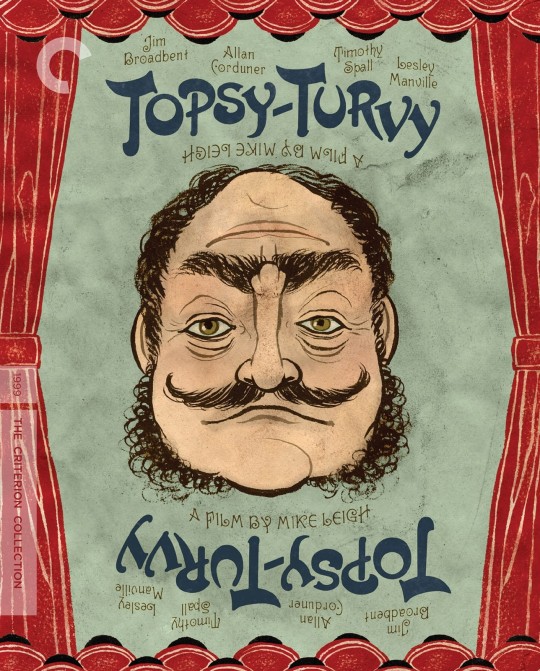
Topsy Turvy (1999) by Mike Leigh portrays the collaboration between lyricist William Gilbert and composer Arthur Sullivan in their development of one of their most notable productions, “The Mikado.” This backstage musical dives into the discipline and obstacles within these two creatives and the theater community during the 1880s of the Victorian Era. Although the film can be subtle and dry at times, it is merely to focus on the process of creating this opera, addressing the age of art, culture, and social attitudes.
Setting and Social Context
The Victorian Era is well known for its major developments in British Society, as it marks the reign of Queen Victoria and the city’s advancements in industrialization, science, and art. The beginning of the film not only establishes discipline and the competitive world of theater, but also the richness of art during the peak of the British Empire and is expressed through mise-en-scene in regards to the off-stage narrative, as Pattullo states, “Such a strong contrast between bleakness of narrative and lavishness of spectacle appears to heighten the viewer’s perception of the extremes of each.” The colorful and diverse architecture throughout the film shows the landscape and art of this era. We can see this through the surrounding visuals of both Gilbert and Sullivan, as their living spaces and environments make up a large portion of the film’s aesthetic and time.
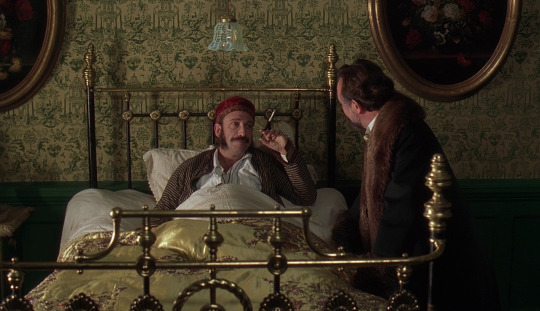
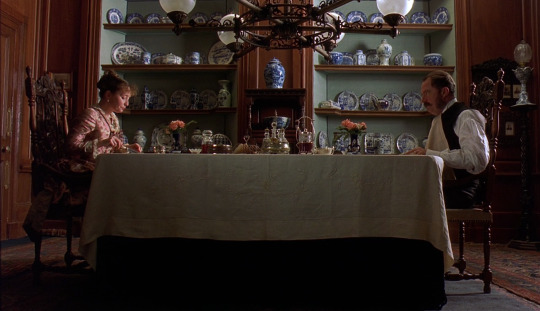
In both shots, we see an Oriental aesthetic within their surroundings, as Sullivan’s wallpaper and Gilbert’s wall filled with bric-a-brac reflect the British Empire’s colonial history and trading within Asian countries. Moreover, this aesthetic acts as a manifestation towards the creation of “The Mikado,” as this idea is established through a particular scene where Gilbert hangs a Japanese sword on his wall after perusing around the Japanese cultural exhibit. This scene shows Leigh’s direction of using architecture and decoration to emphasize Gilbert’s shock of inspiration through Japanese art and culture that displays an era of diversification.
youtube
The Separation of Performance and Narrative Space
Although the musical’s operatic sound is a standing point to the film, the off-stage perspective and narrative is what stood out the most. The structure of backstage musical gives the audience a double perspective of both the theatrical performance and creative development, as Lauren Pattullo states in her essay, “The spectator of the backstage musical can be said to experience a sense of community spirit in the exposed world of the behind-the-scenes workings of the theatre, whilst also witnessing the spectacle of a fully polished performance, as if viewing from the best seat in the house.” We see this in the editing choices that are made to transition from narrative space to performance space, as it usually starts with being in rehearsals and cutting to the stage performance. This brings emphasis towards the dominance of the off-stage narrative within this backstage musical, as Leigh focuses on the process of the two creatives and the theater’s ability to express their vision.
youtube
Another aspect of the narrative space is the audience’s ability to witness the private lives of Sullivan, Gilbert, and different characters in the opera that gives the film complexity and dimension. In particular, Sullivan’s deep rooted goal to reach his potential as a composer is well versed in the film, bringing the audience closer to his character and his passion for theater. This idea goes along the same lines of other characters in the film, as it’s a different way to get close and personal with characters within the general genre of musical. A specific scene that embodies the narrative space is the theater community in defense of keeping Mr. Temple’s song in the musical. It not only shows the relationships between one another, but also their passion in the artistry and their key role in doing what is best for the company.
youtube
The Spectacle: Orientalism and Cultural Appropriation
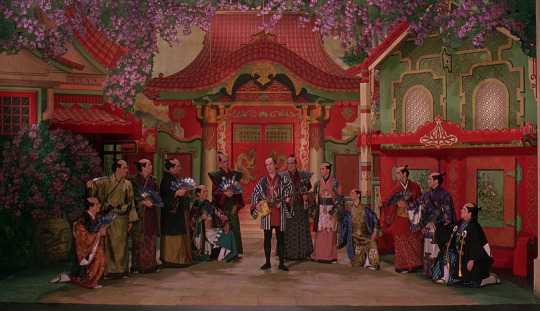
“The Mikado” was one of Gilbert and Sullivan’s most famous works, as this set off their careers. But, as a more modern audience, we must point out the clear racism and form of cultural appropriation of Japanese culture that is displayed both off-stage and on-stage. Especially with the on-stage set design and costume, we see a Japanese aesthetic, but within song, the traditional English sounds reflects on Gilbert's "Topsy-Turvy-dom." This brings the audience to a surrealist experience through the use of Oriental aesthetics to express a "refreshing" concept that others Asian identities.
A specific scene that stood out to me within this concept was the rehearsal of the three women trying to imitate the Japanese women brought for example. This scene shows the attitude within race during this time and the created stereotypes around Asian people being embedded in the film, as Pattullo elaborates on the spectacle, stating, "Perhaps Berkeley’s choreography uses the dancers’ femininity to create spectacle to an extent, whilst simultaneously achieving a degree of dehumanization, as the dancers blend into special effects and become mere components of patterns and designs." This idea is blatantly shown through the makeup put on the performers and the etiquette they act upon on stage. This is also seen through the reactions of the theater performers in being a part of a culturally different musical, as the backstage musical structure creates a double-layered spectacle of the on-stage presence of Japanese aesthetic and the off-stage narrative of Gilbert's fascination with the culture and performers reacting in an unfamiliar way.
youtube
Discussion Questions:
Can there be imbalance within the off-stage and on-stage narrative? Can this be an effective tool and what can it emphasize?
Are there common stylistic similarities in backstage musicals to transition from the off-stage to the on-stage?
How does culture and era play a part in the off-stage narrative, and how is it addressed?
19 notes
·
View notes
Text
ok because i am nice and have autism here is ur brief history of niigo 1/5 posts @the-moth-from-elsewhere . the other posts come when i have the will to read the stories i dont rember
warning for suicide mentions
also for ur consideration; niigo main story digest animation
niigo backstory:
kanade/K leader and composer. started making music to save people since her father fell into what i think was a coma from overworking. has a savior complex
mafuyu/yuki lyricist + sekai owner. started making music with kanade after hearing her song one day and thinking it could save her. lost her taste has a good girl persona and needs therapy
ena/enanan artist. saw the music one day and drew an artpiece inspired by the music. invited to join the same time as mizuki. has a bitch father and anger issues. i relate to her hard
mizuki/amia MV MAKER!!! saw enas art and made a music video with it, realised "i forgot to ask to use the art" got permission, posted the mv and got invited with ena. trans girl. loves cute things. is a cute thing. has a sister called yuuki :)
MAIN STORY IMPORTANT EVENTS:
c1: kanade opens untitled on her computer and gets sent to the empty sekai. meets miku.
c3: ena mentions a music artist called OWN (important) incredibly popular. like insanely. kanade is suspicious that OWN is actually mafuyu.
ch4: mizuki overhears a conversation with mafuyu and her mom. mizuki asks mafuyu is she is ok. mafuyu is not. this isnt that important i just like mizumafu
ch5: mafuyu is gone. she has been gone for a week. Mizuki opens untitled and blinds everyone
ch6: miku gives the sekai lore oh hey theres mafuyu
ch7: mafuyu has not eaten for a week. oh wow mafuyus actually own and enas gonna go after mafuyu like a rabid dog. oh and shes left niigo. miku kicks mizuenakana out of sekai.
ch8: enas not happy. ena very much snaps. ena confesses to herself that she is suicidal
ch9: (bursts into tears) mizuki getting gossiped about again. eat shit and die. mizuki is also Suicidal

ch12: kanade goes to sekai and hears her song. the song that reached mafuyu. mafuyus true feelings are not to disappear
ch13: just read this one actually
ch14: mizuena conversatio WAIT WHATS THAT. THE MIZUMAFU PARALLELS??? BOTH MADE TO CONFORM TO SOCIETY???
ch16+17: kanamizu are heading to sekai! the start of the end.. ena does not gaf. (< she does) mafuyu slaps kanades phone onto sekais floor. kanade is cursed. mafuyu does not gaf (she will)
ch18: also just read this one. for a better experience, watch the chapter on youtube
ch19: we found your true feelings yuki!! hit it miku! (composing the future starts playing)(< listen to composing the future its good and it was made by mafumafu)
ch20: they meet at the niigo diner! mizuki gets fries. mizuki loves fry. mafuyu thanks kanade for finding her. were done. first focuses cominguhhh whenever probably within the next 2 days
3 notes
·
View notes
Text
Harry Styles is a Mermaid
Disclaimer: I am sure I’m not the first to report and share these links and images. I thought people would find this interesting, so I’m sharing my foray down this rabbit hole. I’d welcome any additional links or thoughts related to Mermaids and the LGBTQ community.
If you know anyone that should be credited for pictures here, let me know. None of them belong to me.
***
In November 2014, Harry Styles had the image of a mermaid tattooed on his left forearm. The bare-chested siren joined multitudes of other nautical themed tattoos that litter his body.
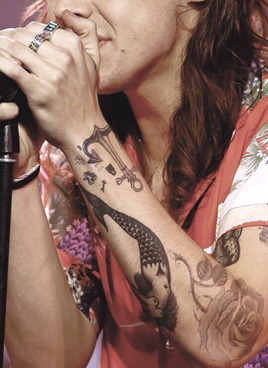

A few days after the new tat appeared, he responded to a question at a meet and greet.
“I am a Mermaid,” he said.
I started the research on this post when I saw the gif with his quote about being a mermaid. Rest below the cut.
Harry Styles’ Mermaid Tattoo — The Real Reason Behind His New Ink – Hollywood Life
I’m not going to tell you why he said he’s a mermaid. I don’t know what it means to him. I have no idea. Maybe he simply likes mermaids. Maybe he feels like it matches the themes of his and Louis’ other nautical tattoos. I can't pretend to know.
“Mermaid” as a theme, though, has a decades long association with the LGBTQ community. And I think that’s interesting in light of the imagery that Harry himself has shared and seems to connect to.
Like, that time he wore a shirt with a famous line from The Little Mermaid.
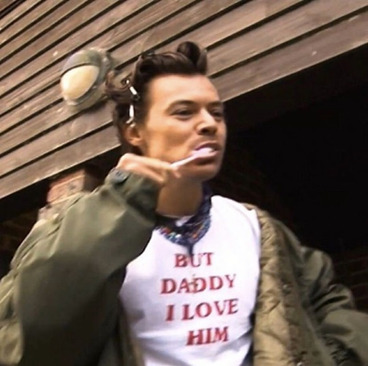
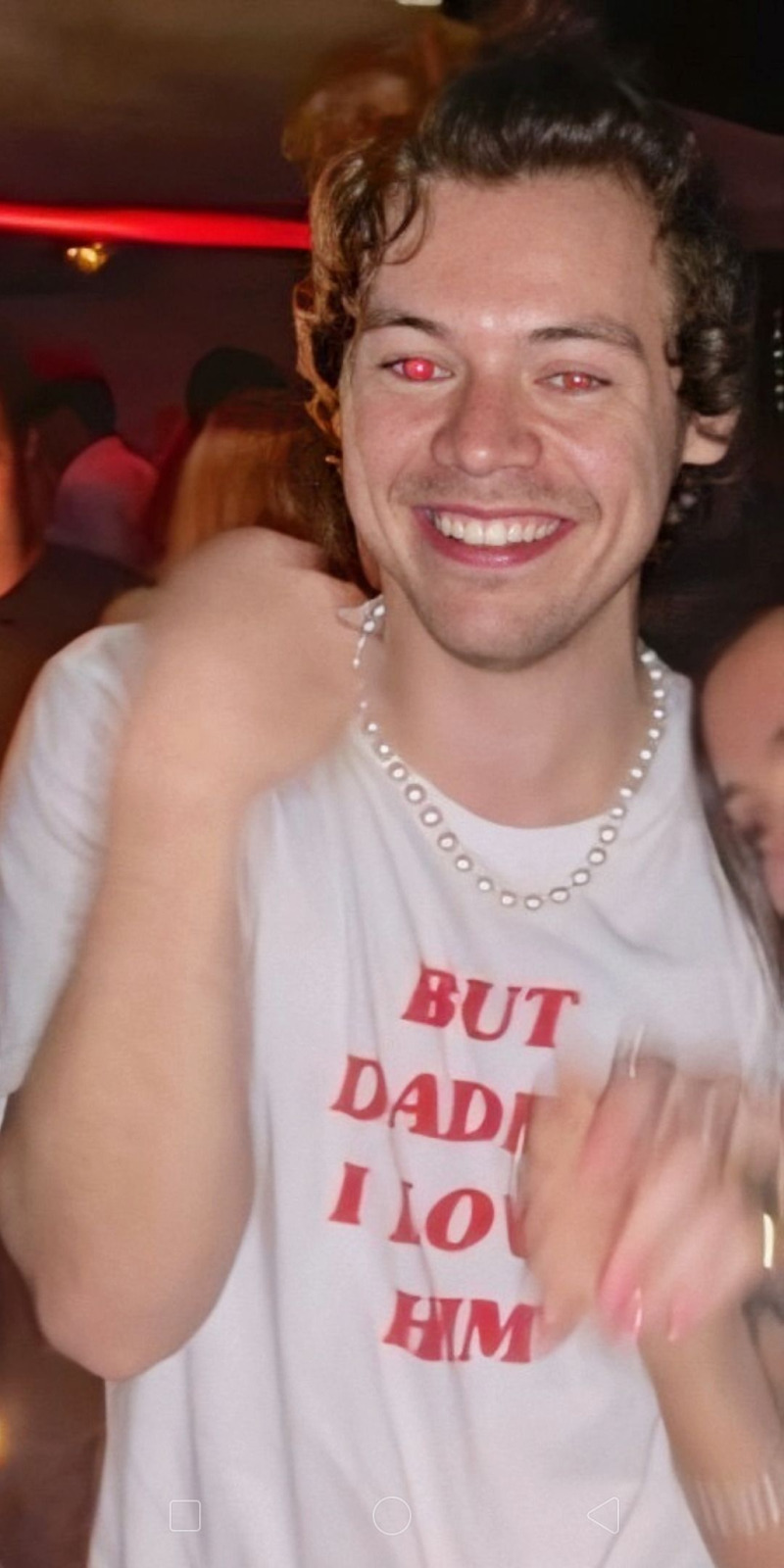
Or in 2019, when he dressed as Ariel for a Saturday Night Live photoshoot.

Did Harry Styles REALLY say 'I am a mermaid'? Truth behind viral photo and his Ariel look for 'SNL' | MEAWW
Or his his whole video for Music for a Sushi Restaurant:
youtube
I’ve seen the Little Mermaid probably dozens of times. My child and I watched it a lot when she was growing up. And while I always knew it was an allegory for being different, I didn’t think about the deeper meaning as it relates to the LGBTQ community until more recently.

According to this article from the Smithsonian,
The central story of The Little Mermaid is, of course, 16-year-old Ariel’s identity crisis. She feels constrained by her patriarchal mer-society and senses she doesn’t belong. She yearns for another world, apart from her own, where she can be free from the limits of her rigid culture and conservative family. Her body is under the water, but her heart and mind are on land with people. She leads a double life. She is, essentially, “in the closet” (as symbolized by her “cavern”—or closet—of human artifacts, where the character-building song “Part of Your World” takes place).
Source: 'The Little Mermaid' Was Way More Subversive Than You Realized | Arts & Culture| Smithsonian Magazine https://www.smithsonianmag.com/arts-culture/little-mermaid-was-way-more-subversive-you-realized-180973464/
The Disney version was written by writer-producer-lyricist Howard Ashman and composer Alan Menken.
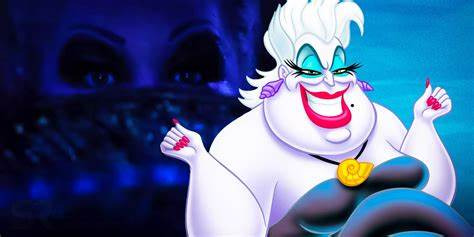
The character of Ursula, though, is the real LGBTQ icon. “Conceived by Ashman, Ursula is based on the famous cross-dressing performer Divine, who was associated with the openly gay filmmaker John Waters. As scholar Laura Sells explained in a 1995 anthology of essays, Ursula’s “Poor Unfortunate Souls” song is essentially a drag show instructing the naive mermaid on how to attract Prince Eric (who is conspicuously uninterested in Ariel and most content at sea with his all-male crew and manservant Grimsby). “In Ursula’s drag scene,” Sells wrote, “Ariel learns that gender is performance; Ursula doesn’t simply symbolize woman, she performs woman.” (same source as above).
A gay man in 1980s America, Ashman had personal experience with the culture wars over “family values” and gay rights. The “Reagan Revolution” marked the arrival of the long-brewing marriage of the Republican Party with conservative Christians and included a platform that was unfriendly to gay rights, to say the least. President Reagan ignored the AIDS epidemic that swept the nation (refusing to appropriate any federal funds for research or treatment), and Republicans in general claimed the “gay plague” was God’s punishment for homosexuality. Ashman saw the film as an opportunity to advance a social message through the medium of “family entertainment.” The last thing Americans would expect from Disney was a critique of patriarchy, but sure enough, Ashman’s The Little Mermaid is a gutsy film about gender and identity—a far cry from the staid Disney catalog. (same source).
Anyone who was around in 2015 knows about RBB/SBB. But if you didn’t, the Rainbow Bears (RBB/SBB, largely assumed to be created and curated by Harry and Louis) mentioned Divine on December 1, 2015. Just after they posted about her, Harry tweeted a lyric that alluded to Divine. See below.
Credit to @SkepticalLarrie
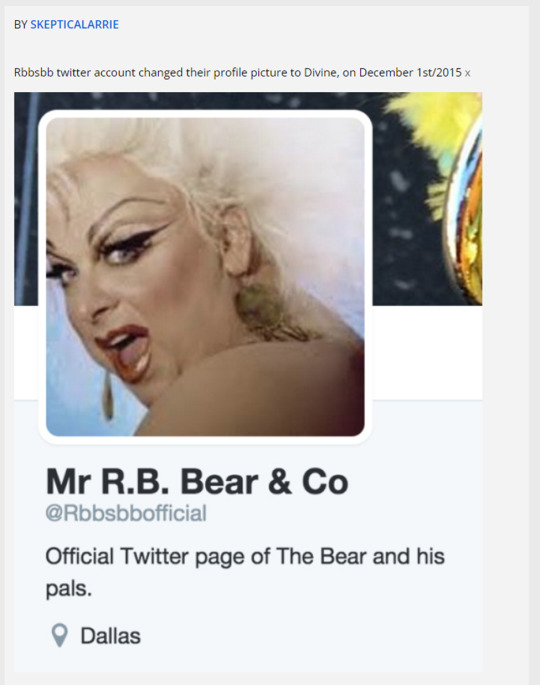

There’s a whole other rabbit hole you can go down about John Waters (openly gay film director) and Divine and Pink Flamingos (Pink Flamingos: A Queer Beginner’s Guide to Family, Style and Not Giving a Sh*t | by Joe Corr | Medium. https://mandysweats.medium.com/pink-flamingos-a-queer-beginners-guide-to-family-style-and-not-giving-a-sh-t-fa9aa3e6c96f
Here’s another article that talks about The Little Mermaid being important to the LGBT community.
How The Little Mermaid Found A Place In The Hearts Of LGBTQ Fans | HuffPost UK Entertainment (huffingtonpost.co.uk)
There was a lot of speculation about Harry being potentially cast as Prince Eric in a live action version of the Little Mermaid. I’m not sure how serious those rumors were, but I can imagine based on all of this research, that he might have found the Prince wasn’t the character he related to most.
Harry Styles fans upset over 'Little Mermaid' reports | CNN https://www.cnn.com/2019/08/14/entertainment/harry-styles-little-mermaid-trnd/index.html
To go even further down the rabbit hole, go all the way back to the original story. The Hans Christian Anderson version has a tragic ending, that doesn’t end with the mermaid happily ever with the prince. There is some speculation that the story was an allegory for an unrequited love that Anderson had toward a straight acquaintance.
The Little Mermaid Is Really About Unrequited Gay Love | by Tamara Mitrofanova | Lessons from History | Medium
I also want to point out that Mermaids is a UK based charity organization, that “supports transgender, nonbinary and gender-diverse children and young people until their 20th birthday, as well as their families and professionals involved in their care.” About Mermaids - Mermaids (mermaidsuk.org.uk) https://mermaidsuk.org.uk/about-us/
All of this could be coincident to the true purpose behind what Harry’s tattoo means to him. We will likely never know its exact meaning to him.
But as time passes, and we see Harry waving various LGBTQ flags and hinting at being in the community himself, I think it might bear remembering that he said he WAS a mermaid. And I think that’s beautiful, Harry.

#harry styles#mermaid#mermaid tattoo#harry is a mermaid#divine#RBB#Louis Tomlinson#The Little Mermaid#Youtube
46 notes
·
View notes
Text

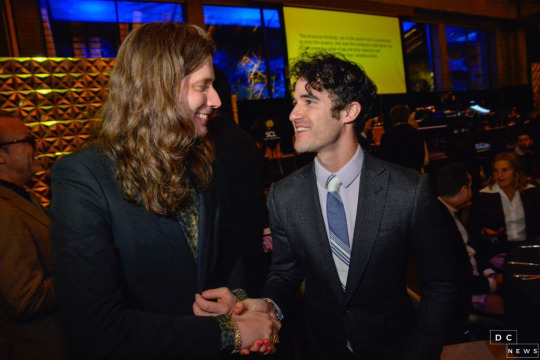



[HQ] Darren Criss, Ludwig Göransson, Diane Warren, Carter Burwell and Justin Hurwitzand attend 4th Annual Society of Composers and Lyricists (SCL) Awards at Skirball Cultural Center on February 15, 2023 in Los Angeles, California. (Photo by Jerod Harris/Getty Images)
#darren criss#ludwig göransson#diane warren#carter burwell#justin hurwitzand#the scl#scl awards 2023#photos#feb 2023
34 notes
·
View notes
Text



Darren Criss hosts the 4th Annual Society of Composers and Lyricists (SCL) Awards | February 15, 2023 | 📸 by Jerod Harris/Getty Images
#Darren Criss#4th SCL Awards#i really missed him in a nice suit with a tie#pretty eyes#pretty curls#pink nails#from crop top to this#aghh love him#please do not repost
45 notes
·
View notes
Text
Academy Award-Winning "THE BOY AND THE HERON" Returns to Theaters Nationwide March 22nd, 2024.
In celebration of the Academy Award win for Best Animated Feature for Hayao Miyazaki and Studio Ghibli’s latest feature, THE BOY AND THE HERON, GKIDS, the North American distributor for the Studio Ghibli library of films, is proud to bring the critically acclaimed and award winning feature back into theaters nationwide, beginning March 22nd. Bring back screenings will include exclusive bonus content featuring an introduction from the film’s composer Joe Hisaishi, who received a Golden Globe nod for his work on the film, and a recorded drawing session with supervising animator Takeshi Honda, who was honored at this year’s Annie Awards with a win for Best Character Animation.

Bring back screenings will be in both the original Japanese language, as well as the English-language version, which features the voices of Christian Bale, Dave Bautista, Gemma Chan, Willem Dafoe, Karen Fukuhara, Mark Hamill, Robert Pattinson and Florence Pugh.
The weekend’s achievement at the Academy Awards marked a second Oscar for legendary director Hayao Miyazaki, who earned four previous nominations and won his first Oscar for Spirited Away (released in 2002). He was also recognized at the 2014 Governors Awards with the Academy’s Honorary Award for his exceptional contributions to cinema. Hayao Miyazaki’s Spirited Away and THE BOY AND THE HERON are the only two hand-drawn films to win in the history of this category, which was established by the Academy in 2002. It was additionally the first Oscar win for producer Toshio Suzuki, who previously earned three nominations. The win continued Studio Ghibli’s extraordinary Oscar run, which includes 7 total nominations, with 2 wins. The win also marked the first as a company for GKIDS after 13 nominations in the Best Animated Feature category.
THE BOY AND THE HERON is GKIDS’ highest-grossing release of its 16-year history and Studio Ghibli’s highest-grossing film in North America. To date, it has earned over $46 million at the North American box office, also hitting the milestone of highest-grossing original Japanese animated film of all time, domestically.
GKIDS released THE BOY AND THE HERON in cinemas and IMAX nationwide on December 8, 2023, marking the first title in the Studio Ghibli catalog to be released in IMAX premium formats and opening at No. 1. The film was released in the U.S. in its original Japanese with English subtitles, as well as in a new English-language version featuring the voices of Christian Bale, Dave Bautista, Gemma Chan, Willem Dafoe, Karen Fukuhara, Mark Hamill, Robert Pattinson and Florence Pugh.
THE BOY AND THE HERON made its international premiere at the Opening Night Gala of the 48th Toronto International Film Festival (TIFF). Tickets to all five TIFF screenings sold out in record time and the film received glowing reviews, placing in the top three for the TIFF People’s Choice Awards. For Best Animated Feature, THE BOY AND THE HERON has won the BAFTA Award, the Golden Globe and several prestigious critics awards including the New York Film Critics Circle and Los Angeles Film Critics Association honors. It was also recognized by the National Board of Review as a Top Film for 2023 and won two Annie Awards in 2024. In addition, THE BOY AND THE HERON Composer Joe Hisaishi garnered Best Score nominations from the Golden Globes and the Society of Composers and Lyricists, and was celebrated at this year’s Annie Awards with the Winsor McCay Lifetime Achievement Award.
About “THE BOY AND THE HERON” After losing his mother during the war, young Mahito moves to his family’s estate in the countryside. There, a series of mysterious events lead him to a secluded and ancient tower, home to a mischievous gray heron. When Mahito’s new stepmother disappears, he follows the gray heron into the tower, and enters a fantastic world shared by the living and the dead. As he embarks on an epic journey with the heron as his guide, Mahito must uncover the secrets of this world, and the truth about himself.
youtube
#film news#movie news#boy and the heron#studio ghibli#Hayao Miyazaki#Academy Award-Winning#theatrical return#Youtube
3 notes
·
View notes
Text
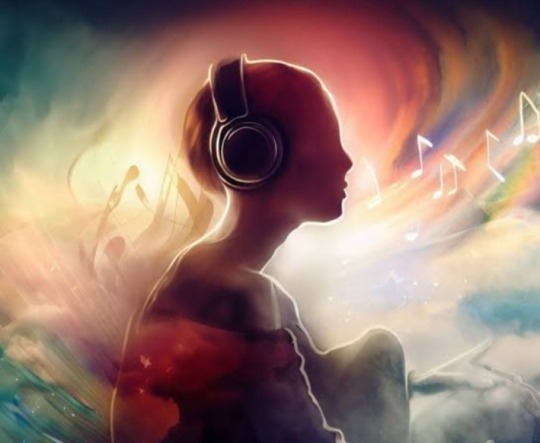
Harmonizing Souls: Exploring The Timeless Allure of Music 🎶

Introduction:
Music, a universal language that transcends boundaries and cultures, has been an integral part of human expression for centuries. From the rhythmic beats of ancient drums to the complex compositions of contemporary symphonies, music continues to captivate and connect people worldwide. In this blog, we delve into the multifaceted world of music, exploring its historical roots, emotional impact, and evolving forms.
1. The Evolution of Music:
Take a journey through time as we explore the evolution of music, from the earliest forms of vocalizations and primitive instruments to the sophisticated genres and styles that define today's musical landscape. The rich tapestry of musical history reveals how different cultures and societies have contributed to the diverse array of sounds we cherish today.
2. The Emotional Power of Music:
Why does music have such a profound impact on our emotions? Delve into the psychology of music, understanding how melodies, harmonies, and rhythms can evoke a wide spectrum of feelings. Whether it's the uplifting crescendo of a symphony or the melancholic notes of a blues guitar, music has the power to connect with our innermost emotions in ways that words often cannot.
3. Genre Diversity:
Explore the vast diversity of musical genres, from classical to jazz, rock to hip-hop, and beyond. Each genre brings its own unique flavor, reflecting the cultural, social, and historical contexts that shape its development. Dive into the distinctive characteristics of different genres, appreciating the creativity and innovation that fuel musical evolution.
4. The Influence of Technology:
Examine how advancements in technology have revolutionized the music industry. From the vinyl records of yesteryear to the digital streaming platforms of today, technology has not only changed how we consume music but has also shaped the very sounds and production techniques employed by artists. Explore the pros and cons of these technological shifts in the music landscape.
5. The Artist's Journey:
Step into the shoes of musicians, understanding the creative process, challenges, and inspirations that drive their work. Whether a classical composer, a rock guitarist, or a hip-hop lyricist, each artist contributes a unique voice to the ever-expanding symphony of human creativity. Discover the stories behind iconic compositions and the artists who have left an indelible mark on the world of music.
Conclusion:
As we conclude our exploration of the enchanting world of music, it's evident that this art form holds a timeless allure. From its ancient origins to the cutting-edge sounds of today, music remains a powerful force that transcends boundaries and unites people across the globe. Whether you're a casual listener or a dedicated musician, the beauty of music lies in its ability to inspire, comfort, and connect us in ways that resonate with the very essence of our humanity.
🎼🎶🎶🎶🎼🎶🎶🎶🎼🎶🎶🎶🎼🎶🎶🎶🎼
3 notes
·
View notes
Text
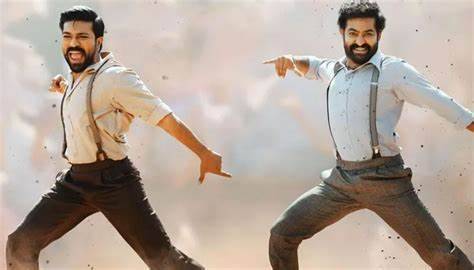
RRR at Oscars 2023: Why India's Naatu Naatu song wowed the jury
A track from Telugu blockbuster RRR, short for Rise Thunder Revolt, Naatu was the main Indian film melody to be selected for an Oscar.
Its artists likewise performed at the Foundation Grants, which are being broadcasted in India on Monday morning.
The tune turned into a worldwide sensation - moving perpetual Instagram reels and dance patterns via web-based entertainment - after the film's delivery in US last year, where its fast rhythm and synchronized movement were a moment hit with the crowds.
Created by MM Keeravani with verses wrote by Chandrabose, Naatu previously left a mark on the world once in January when it won the Brilliant Globe for best unique tune, overcoming competitors like Rihanna, Taylor Quick and Woman Crazy. That very month, the melody additionally won the Pundits Decision grant for the best tune.
"It's not a result of the music or the dance - the whole story of RRR can be summed up inside these 10 minutes of Naatu," the movie's chief, SS Rajamouli, told Vanity Fair.
A verifiable dream, highlighting hotshots Slam Charan and Jr NTR in lead jobs, RRR recounts the imaginary story of two progressives who battle contrary to English rule in India.
Rajamouli says he imagined Naatu as a "battle scene" in which two political dissidents push an English official to the brink of collapse - through dance.
"The melody is a story inside the bigger story of the film," the producer said.
Back in 2020, when RRR was still under creation, all Rajamouli told Keeravani was that he wanted a tune that would feature the moving ability of his legends.
Keeravani then, at that point, went to his number one lyricist Chandrabose and said: "Compose anything you like. In any case, this story happens during the 1920s, so use words proper to the time."
With no song or tune to work with, Chandrabose previously concocted the snare line of "Naatu" and that signifies "Dance, Dance" in Telugu.
He let BBC Telugu know that he composed an uptempo tune with a quick beat, which he realized Keeravani leaned toward. The beat is generally utilized in society tunes of the two Telugu-talking provinces of India - Andhra Pradesh and Telangana.
Attracting motivation from his experience growing up Telangana, Chandrabose incorporated a few folksy references - like eating bean stew with jowar roti (red sorghum bread) - in the tune.
Most of the melody was finished in two days, Chandrabose said. Yet, it required 19 months for the leftover piece to meet up.
Rajamouli and Keeravani credit a lot of Naatu's prosperity to the melody's choreographer, Prem Rakshit, who made around 95 dance ventures for the track.
"Every one of them [the actors] have their own style," Rajamouli said in a prior interview. "So he needed to find something that fit the two of them."
Rakshit said he made 30 forms of the mark step in which NTR Jr and Smash Charan hit the dance floor with their arms around one another. The wonderful arrangement must be additionally made do after Charan asked the chief "in the event that they could follow through with something" with the ensemble.
The melody comes full circle in a long distance race dance-off as every one of the artists kick up a tempest, gradually imploding individually in depletion until just the legends stay standing.
Slam Charan and NTR Jr then go to take on one another and a dance rivalry between the two legends follows. Rajamouli said he attempted to set out the film's subjects of fellowship, contention and fortitude through the grouping.
Also, the rest is history.
Since the film's delivery last year, fans have been attempting to duplicate the unpredictable foot turns and infectious dance moves. At film screenings in Los Angeles, crowds were much of the time seen racing to the stage to move when the tune played.
Despite the fact that the track was shot before the Mariinskyi Castle, a beautiful ocean blue design in Ukraine, Rajamouli said his point was to reproduce the environment of an Indian town. In past meetings, the chief has admitted that individuals referred to him as "insane" for shooting in a country very nearly war.
The group shot the tune north of 15 days, working 12 hours every day with 150 artists and a team of 200 individuals.
Rakshit said that each time he approved a take, Rajamouli would request "one more" shot.
"He went outline by casing to ensure we were in a state of harmony," Charan said in a meeting.
12 notes
·
View notes
Note
hey heyyyy do you happen to know where this pic is from https://www.tumblr.com/rareswifts/142745745281?source=share ??? or just like the event it was taken 😯
December 28, 2013 at the Society of Composers & Lyricists holiday dinner party!

3 notes
·
View notes
Text
Connie Converse Was ‘the Female Bob Dylan.’ Then She Disappeared
In an excerpt from his new book, To Anyone Who Ever Asks: The Life, Music, and Mystery of Connie Converse, journalist and musician Howard Fishman examines the singer-songwriter's talent and mysterious life

A Lost Singer's Music, Finally Found
LISTEN 5:55 https://www.npr.org/2009/04/24/103453479/a-lost-singers-music-finally-found
The story of missing folk artist Connie Converse
6th Jun 2023 11.00 BST
The music industry has failed many incredible female folk artists, such as Vashti Bunyan and Linda Perhacs, to the point that you could make a whole subgenre out of ‘forgotten and subsequently rediscovered female folk musicians’. Often told that their music was not conventionally commercial enough or subjected to gender-based discrimination, many female folk singers were forced to abandon their musical ambitions due to the industry’s lack of equality.
Connie Converse was a true pioneer of the contemporary folk singer-songwriter genre, beginning her musical career in the 1950s, predating those considered to be folk icons, such as Bob Dylan and Leonard Cohen. Folk scholar Ellen Stekert told The New York Times, “She was even better than [Dylan] as a lyricist and composer, but she didn’t have his showbiz savvy, and she wasn’t interested in writing protest songs.”
However, Converse never released any music during her lifetime, unable to see herself become somewhat of a cult folk icon in the 2000s. The musician disappeared in 1974, cutting all contact with her family and friends. To this day, no one knows what happened to her and for how long she lived; all we have are her beautiful songs, which resurfaced in the early 2000s thanks to her old friend, Gene Deitch, and several university students.
Elizabeth Converse, or Connie as she was better known, was born in New Hampshire in 1926. After moving to New York in 1944, she worked at places such as the American Institute of Pacific Relations and the Academy Photo Offset printing house, singing in her free time. However, by the late 1950s, she decided to concentrate on music and moved to the West Village. During this period, she wrote plenty of songs on her guitar that would be discovered decades later. She recorded them on an at-home reel-to-reel recorder with the help of Deitch, documenting her songwriting process through a series of demos.
Through Deitch’s connection to television (he was a cartoonist and animator), Converse appeared on CBS’s The Morning Show in 1954. It was her only known television performance, and no known recordings exist. Deitch told The Awl, “There were many better singers than Connie. But few were as intelligent or literate or beautiful. Her songs still haunt me.”
A few years later, she recorded an album, Musicks (Volumes I and II), for her brother, Phil, which remains unreleased. Despite trying hard to get her music out there, no one seemed interested, so she left New York, where she worked as a secretary and writer in Michigan. The following decade saw Converse’s life rapidly deteriorate. She was depressed and reliant on alcohol and cigarettes, and there is no evidence to suggest that she was ever in a romantic relationship. Phil explained, “After New York, I think she’d arrived at a place where she decided she wasn’t going to make it, and in many ways, that really hurt her.”
Life got too much for Converse, and by the early 1970s, her family made efforts to help her regain some optimism. Trips to England and Alaska were unsuccessful, and she eventually decided to pack up her things and move away to start a new life. She wrote a series of letters to her family and drove away. “Let me go. Let me be if I can. Let me not be if I can’t. […] Human society fascinates me and awes me and fills me with grief and joy; I just can’t find my place to plug into it,” she wrote.
Although the family hired a private investigator to find Converse, they ultimately decided that it was her decision to leave, and they wanted to respect that. Phil explained, “Leaving was her choice, and I would be embarrassed to show up on her doorstep and say, ‘Hey, what’s going on?’ I know it might sound ghastly, but that’s how I felt.”
Converse’s music was discovered thanks to Deitch, who was invited onto the WNYC radio show, Spinning on Air by David Garland in 2004. Using it as an opportunity to play some of Converse’s music, Deitch played ‘One By One’. The track captured the attention of two young listeners, Dan Dzula and David Herman. Knowing that Converse’s music would touch others, they decided to do further research and, using songs provided by Deitch and Phil, created the compilation album How Sad, How Lovely.
The record was released in 2009 and has since become a hugely influential album, loved by current geniuses such as Angel Olsen, Laurie Anderson and Karen O. Converse’s beautiful body of work reflects her intelligence and warmth, and her distinctively feminine writing was truly innovative.
Listen to the album below HOW SAD,HOW LOVELY
3 notes
·
View notes
Text
光のありか (CHiCO) English Translation

光のありか Hikari no Arika Where The Light Is
CHiCO 1st Digital Single Lyricist: CHiCO & SHIBU Composer: SHIBU
Official MV kanji & romaji
-----
T/N: Congratulations on the 1st digital single, CHiCO-san!!
Keep in mind that Japanese and English aren’t my first language. I never claim my translation (attempts) to be error-free. As always, if you’re going to use or reference my translations, please do not claim it as your own and credit me.
-----
僕らの世界は 動き出したんだ 光の矢が 胸射した時
Bokura no sekai wa ugokidashitan da Hikari no ya ga mune sashita toki
Our world has started to move The moment an arrow of light hit our chest
繋げたい未来 いま僕らの 心は唄っている
Tsunagetai mirai Ima bokura no Kokoro wa utatteiru
The future we want to connect Right now, our Hearts are singing
常識 社会 世間の視線 変わらない現実(いま)を求められて 動けない 「この世界に夢は要らない」みたいだ
Joushiki shakai seken no shisen Kawaranai ima wo motomerarete ugokenai “kono sekai ni yume wa iranai” mitai da
Common sense, the society itself, the eyes of the public Seeking an unchanging present, unable to move As if “this world has no need of dreams”
らしくない今を生きるよりも 新しい明日 望むなら 振り払う否定 心ない他所の声など どうでもいいだろ
Rashikunai ima wo ikiru yori mo Atarashii ashita nozomu nara Furiharau hitei kokoronai yoso no koe nado Dou demo ii daro
Rather than living in a present not typical of you If you wish for a brand new tomorrow Shake off the denial and the heartless voices of those people They don’t matter to you
青い空よ 僕を照らしてよ 今この瞬間 咲けよ 美しく
Aoi sora yo Boku wo terashite yo Ima kono shunkan Sake yo utsukushiku
Oh, blue sky Shine upon me Right now, at this moment Bloom beautifully
僕らの世界に 追い風が吹いた 走り出した 光を辿って
Bokura no sekai ni oikaze ga fuita Hashiri dashita hikari wo tadotte
A tailwind blew into our world We started running, following the light
「うまくいくもんか」 だから何なんだ? 顔上げて飛び込め
“Umaku iku mon ka” Dakara nan nan da? Kao agete tobikome
”No way it would turn out well.” But so what? Raise your head and take the leap
僕らの世界は 動き出したんだ 光の矢が 胸射した時
Bokura no sekai wa ugokidashitan da Hikari no ya ga mune sashita toki
Our world has started to move The moment an arrow of light hit our chest
繋げたい未来 いま僕らの 心は唄っている
Tsunagetai mirai Ima bokura no Kokoro wa utatteiru
The future we want to connect Right now, our Hearts are singing
前進 不安 転んだ数 掴んだはずの景色だけど 甘くない 描く理想と反した世界みたいだ
Zenshin fuan koronda kazu Tsukanda hazu no keshiki dakedo amakunai Egaku risou to hanshita sekai mitai da
Progress, anxiety, the number of times I fall down It’s a scenery I should have seized but it’s not that easy It’s like a world that goes against the ideals I’ve drawn
焦って今を嘆くよりも あがいた先で 届けたい そらさない視線 熱くなる君の温度を 感じてしまった
Asette ima wo nageku yori mo Agaita saki de todoketai Sorasanai shisen atsuku naru kimi no ondo wo Kanjite shimatta
Rather than rushing and lamenting the present I want to take it to the end of my struggle Don’t avert your eyes, your temperature that is increasing I felt it
紅い空よ 僕を燃やしてよ 一秒でも長く 咲けよ 誇らしく
Akai sora yo Boku wo moyashite yo Ichibyou demo nagaku Sake yo hokorashiku
Oh, crimson sky Set me aflame For a second longer Bloom proudly
歩いたこの道が 伝わるこの熱が 溢れるこの i が 力になる 言葉を 想いを いつか君に届くまで 私は唄っている
Aruita kono michi ga Tsutawaru kono netsu ga Afureru kono i ga Chikara ni naru Kotoba wo omoi wo itsuka kimi ni todoku made Watashi wa utatteiru
This road I walked This heat that is transmitted This overflowing *love Will become my strength My words, my feelings, until they reach you someday I will sing
僕らの世界に 追い風が吹いた 走り出した 光を辿って
Bokura no sekai ni oikaze ga fuita Hashiri dashita hikari wo tadotte
A tailwind blew into our world We started running, following the light
「うまくいくもんか」 だから何なんだ? 何度でも飛び込め
“Umaku iku mon ka” Dakara nan nan da? Nando demo tobikome
”No way it would turn out well.” But so what? Take the leap as much as you want
僕らの世界は 動き出したんだ 光の矢が 胸射した時
Bokura no sekai wa ugokidashitan da Hikari no ya ga mune sashita toki
Our world has started to move The moment an arrow of light hit our chest
繋げたい未来 いま僕らの 心は唄っている
Tsunagetai mirai Ima bokura no Kokoro wa utatteiru
The future we want to connect Right now, our Hearts are singing
唄っている Utatteiru Singing
-----
Notes:
* “i” in the lyrics but i interpreted it as ‘ai / love’ (for herself and/or from her fans or the people who support her)
6 notes
·
View notes